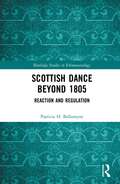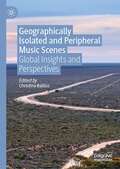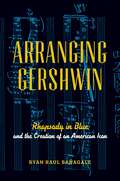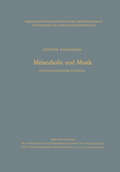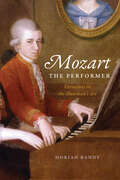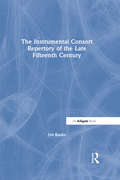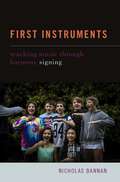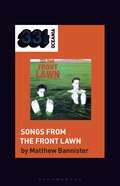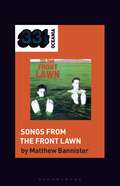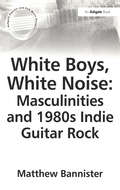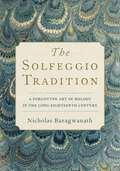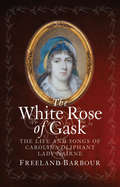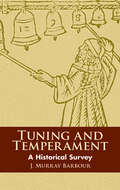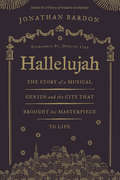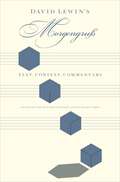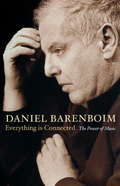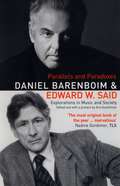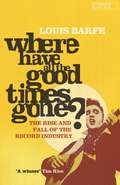- Table View
- List View
Scottish Dance Beyond 1805: Reaction and Regulation (Routledge Studies in Ethnomusicology)
by Patricia H BallantyneScottish Dance Beyond 1805 presents a history of Scottish music and dance over the last 200 years, with a focus on sources originating in Aberdeenshire, when steps could be adapted in any way the dancer pleased. The book explains the major changes in the way that dance was taught and performed by chronicling the shift from individual dancing masters to professional, licensed members of regulatory societies. This ethnographical study assesses how dances such as the Highland Fling have been altered and how standardisation has affected contemporary Highland dance and music, by examining the experience of dancers and pipers. It considers reactions to regulation and standardisation through the introduction to Scotland of percussive step dance and caller-facilitated ceilidh dancing. Today’s Highland dancing is a standardised and international form of dance. This book tells the story of what changed over the last 200 years and why. It unfolds through a series of colourful characters, through the dances they taught and the music they danced to and through the story of one dance in particular, the Highland Fling. It considers how Scottish dance reflected changes in Scottish society and culture. The book will be of interest to scholars and postgraduates in the fields of Dance History, Ethnomusicology, Ethnochoreology, Ethnology and Folklore, Cultural History, Scottish Studies and Scottish Traditional Music as well as to teachers, judges and practitioners of Highland dancing and to those interested in the history of Scottish dance, music and culture.
Geographically Isolated and Peripheral Music Scenes: Global Insights and Perspectives
by Christina BallicoThis book explores the influence of geographical isolation and peripherality on the functioning of music industries and scenes which operate within and from such locales. As is explored, these sites engage dynamic practices to offset challenges resulting from geographical isolation and peripherality.
Arranging Gershwin: Rhapsody in Blue and the Creation of an American Icon
by Ryan BañagaleIn Arranging Gershwin, author Ryan Bañagale approaches George Gershwin's iconic piece Rhapsody in Blue not as a composition but as an arrangement -- a status it has in many ways held since its inception in 1924, yet one unconsidered until now. Shifting emphasis away from the notion of the Rhapsody as a static work by a single composer, Bañagale posits a broad vision of the piece that acknowledges the efforts of a variety of collaborators who shaped the Rhapsody as we know it today. Arranging Gershwin sheds new light on familiar musicians such as Leonard Bernstein and Duke Ellington, introduces lesser-known figures such as Ferde Grofé and Larry Adler, and remaps the terrain of this emblematic piece of American music. At the same time, it expands on existing approaches to the study of arrangements -- an emerging and insightful realm of American music studies -- as well as challenges existing and entrenched definitions of composer and composition. Based on a host of newly discovered manuscripts, the book significantly alters existing historical and cultural conceptions of the Rhapsody. With additional forays into visual media, including the commercial advertising of United Airlines and Woody Allen's Manhattan, it moreover exemplifies how arrangements have contributed not only to the iconicity of Gershwin and Rhapsody in Blue, but also to music-making in America -- its people, their pursuits, and their processes.
Arranging Gershwin: Rhapsody in Blue and the Creation of an American Icon
by Ryan BañagaleIn Arranging Gershwin, author Ryan Bañagale approaches George Gershwin's iconic piece Rhapsody in Blue not as a composition but as an arrangement -- a status it has in many ways held since its inception in 1924, yet one unconsidered until now. Shifting emphasis away from the notion of the Rhapsody as a static work by a single composer, Bañagale posits a broad vision of the piece that acknowledges the efforts of a variety of collaborators who shaped the Rhapsody as we know it today. Arranging Gershwin sheds new light on familiar musicians such as Leonard Bernstein and Duke Ellington, introduces lesser-known figures such as Ferde Grofé and Larry Adler, and remaps the terrain of this emblematic piece of American music. At the same time, it expands on existing approaches to the study of arrangements -- an emerging and insightful realm of American music studies -- as well as challenges existing and entrenched definitions of composer and composition. Based on a host of newly discovered manuscripts, the book significantly alters existing historical and cultural conceptions of the Rhapsody. With additional forays into visual media, including the commercial advertising of United Airlines and Woody Allen's Manhattan, it moreover exemplifies how arrangements have contributed not only to the iconicity of Gershwin and Rhapsody in Blue, but also to music-making in America -- its people, their pursuits, and their processes.
Melancholie und Musik: Ikonographische Studien (Abhandlungen der Nordrhein-Westfälischen Akademie der Wissenschaften #12)
by Günter BandmannDen Anlaß zu den vorliegenden Studien gab Dürers Kupferstich "Melen colia I" von 1514. Der in dem bewundernswerten Buche von ErwinPanofsky und Fritz Saxl (Dürers "Melencolia I", Leipzig 1923) vorgeführte Bilder kreis, der Vorstufen und Nachwirkungen des Dürerblattes umschreibt, bringt einige Darstellungen - so das Cranachbild von 1533 und die Inletabilitas Radierung von Castiglione -, auf denen sich der Begriff oder die Gestalt der Melancholie mit musikalischen Erscheinungen verbindet. Diesen Bildern las sen sich verwandte Beispiele aus den verschiedensten Epochen und Zusammen hängen zufügen. Die Darstellungen sind nach fünf Gruppen geordnet, in denen Melancholie und Musik je nach den geschichtlichen Umständen verschieden bewertet wer den. Diese Einteilung der Kapitel ist grob. Die Plurivalenz der Melancholie und der Musik bringt es mit sich, daß in vielen Darstellungen verschiedene Bedeutungen mitschwingen und das gleiche Denkmal eigentlich verschiedenen Rubriken zugeordnet werden könnte. In der Miniatur aus dem Stuttgart Psalter (Tafel 2, S. 25) ist Melancholie nicht nur Leiden, sondern auch Ge mütsverfassung, die den Menschen in ein besonderes Verhältnis zu Gott bringt, auch auf der indischen Miniatur (Tafel 3, S. 49) scheint sich die Melancholie in eine positiv empfundene Stimmung zu wenden; auf der Castiglione-Radierung (Abb. 47) ist die Musik sowohl verworfenes weltliches Treiben als auch Hilfe zur Divination. Affekte und sinnliche Erfahrungen des Menschen sind selbst in statisch geordneten Weltvorstellungen abhängig von den Konstellationen und Umständen ihrer Begegnung.
Mozart the Performer: Variations on the Showman's Art
by Dorian BandyAn innovative study of the ways performance influenced Mozart’s compositional style. We know Mozart as one of history’s greatest composers. But his contemporaries revered him as a multi-instrumentalist, a dazzling improviser, and the foremost keyboard virtuoso of his time. When he composed, it was often with a single aim in mind: to set the stage, quite literally, for compelling and captivating performances. He wrote piano concertos not with an eye to posterity but to give himself a repertoire with which to flaunt his keyboard wizardry before an awestruck public. The same was true of his sonatas, string quartets, symphonies, and operas, all of which were painstakingly crafted to produce specific effects on those who played or heard them, amusing, stirring, and ravishing colleagues and consumers alike. Mozart the Performer brings to life this elusive side of Mozart’s musicianship. Dorian Bandy traces the influence of showmanship on Mozart’s style, showing through detailed analysis and imaginative historical investigation how he conceived his works as a series of dramatic scripts. Mozart the Performer is a book for anyone who wishes to engage more deeply with Mozart’s artistry and legacy and understand why, centuries later, his music still captivates us.
Mozart the Performer: Variations on the Showman's Art
by Dorian BandyAn innovative study of the ways performance influenced Mozart’s compositional style. We know Mozart as one of history’s greatest composers. But his contemporaries revered him as a multi-instrumentalist, a dazzling improviser, and the foremost keyboard virtuoso of his time. When he composed, it was often with a single aim in mind: to set the stage, quite literally, for compelling and captivating performances. He wrote piano concertos not with an eye to posterity but to give himself a repertoire with which to flaunt his keyboard wizardry before an awestruck public. The same was true of his sonatas, string quartets, symphonies, and operas, all of which were painstakingly crafted to produce specific effects on those who played or heard them, amusing, stirring, and ravishing colleagues and consumers alike. Mozart the Performer brings to life this elusive side of Mozart’s musicianship. Dorian Bandy traces the influence of showmanship on Mozart’s style, showing through detailed analysis and imaginative historical investigation how he conceived his works as a series of dramatic scripts. Mozart the Performer is a book for anyone who wishes to engage more deeply with Mozart’s artistry and legacy and understand why, centuries later, his music still captivates us.
The Instrumental Consort Repertory of the Late Fifteenth Century
by Jon BanksThough individual pieces from the late fifteenth century are widely accepted as being written for instruments rather than voices, they are traditionally considered as exceptions within the context of a mainstream of vocal polyphony. After a rigorous examination of the criteria by which music of this period may be judged to be instrumental, Dr Jon Banks isolates all such pieces and establishes them as an explicit genre alongside the more commonly recognized vocal forms of the period. The distribution of these pieces in the manuscript and early printed sources of the time demonstrate how central instrumental consorts were to musical experience in Italy at this time. Banks also explores the social background to Italian music-making, and particularly the changing status of instrumentalists with respect to other musicians. Convincing evidence is put forward in particular for the lute ensemble to be a likely performance context for many of the surviving sources. The book is not intended to be a prescriptive account for the role of instruments in late medieval music, but instead restores an impressive but largely overlooked consort repertory to its rightful place in the history of music.
The Instrumental Consort Repertory of the Late Fifteenth Century
by Jon BanksThough individual pieces from the late fifteenth century are widely accepted as being written for instruments rather than voices, they are traditionally considered as exceptions within the context of a mainstream of vocal polyphony. After a rigorous examination of the criteria by which music of this period may be judged to be instrumental, Dr Jon Banks isolates all such pieces and establishes them as an explicit genre alongside the more commonly recognized vocal forms of the period. The distribution of these pieces in the manuscript and early printed sources of the time demonstrate how central instrumental consorts were to musical experience in Italy at this time. Banks also explores the social background to Italian music-making, and particularly the changing status of instrumentalists with respect to other musicians. Convincing evidence is put forward in particular for the lute ensemble to be a likely performance context for many of the surviving sources. The book is not intended to be a prescriptive account for the role of instruments in late medieval music, but instead restores an impressive but largely overlooked consort repertory to its rightful place in the history of music.
First Instruments: Teaching Music Through Harmony Signing
by Nicholas BannanWritten for music educators from K - 5 onwards, First Instruments is a practical guide to teaching musical ideas through the first instruments we develop in early childhood, laying the foundation for how the collective creativity the book presents can sustain a lifelong commitment to music-making: voice and hand gestures. Founded on the belief that all children are musical, the book gives music teachers the necessary tools to develop students' confident understanding of pitch relationships through improvisation and composition. Author Nicholas Bannan, a veteran pedagogue and children's choir director, accomplishes this in a classroom-tested system that combines Kodály hand signs with extended use of physical motions that together result in deeply embodied musical knowledge. By participating in the book's many group exercises, students develop this knowledge that ultimately paves the way for acquisition and functional working knowledge of harmony that tends to elude most theory students. As Bannan shows, all effective music teaching needs to involve singing as the portal to a secure and transferable response to pitch. First Instruments encourages educators to draw on games, tasks, and activities in relation to their own curriculum planning. Marrying the development of fluent singing abilities with harmonic understandings, this approach supports musical creativity that is not dominated by the conventional features of a particular genre or style, but instead liberates the musical imagination and enables the exploration of musical styles from throughout history and all over the world.
FIRST INSTRUMENTS C: Teaching Music Through Harmony Signing
by Nicholas BannanWritten for music educators from K - 5 onwards, First Instruments is a practical guide to teaching musical ideas through the first instruments we develop in early childhood, laying the foundation for how the collective creativity the book presents can sustain a lifelong commitment to music-making: voice and hand gestures. Founded on the belief that all children are musical, the book gives music teachers the necessary tools to develop students' confident understanding of pitch relationships through improvisation and composition. Author Nicholas Bannan, a veteran pedagogue and children's choir director, accomplishes this in a classroom-tested system that combines Kodály hand signs with extended use of physical motions that together result in deeply embodied musical knowledge. By participating in the book's many group exercises, students develop this knowledge that ultimately paves the way for acquisition and functional working knowledge of harmony that tends to elude most theory students. As Bannan shows, all effective music teaching needs to involve singing as the portal to a secure and transferable response to pitch. First Instruments encourages educators to draw on games, tasks, and activities in relation to their own curriculum planning. Marrying the development of fluent singing abilities with harmonic understandings, this approach supports musical creativity that is not dominated by the conventional features of a particular genre or style, but instead liberates the musical imagination and enables the exploration of musical styles from throughout history and all over the world.
The Front Lawn's Songs from the Front Lawn (33 1/3 Oceania)
by Matthew BannisterThe Front Lawn is a multi-award-winning, much-loved New Zealand duo-turned-trio made up of Don McGlashan, Harry Sinclair and, eventually, Jennifer Ward-Lealand. A 1980s variety act, The Front Lawn was part of an Aotearoa/New Zealand alternative tradition of duos that combine music, comedy, theatre and film. Their debut album Songs from The Front Lawn (1989) distilled McGlashan and Sinclair's theatrical stage show and their groundbreaking short films, Walkshort and The Lounge Bar, while also thrusting the band into the burgeoning New Zealand indie scene. The album is a snapshot of '80s New Zealand, a turbulent, creative period for indie music, indie film and musical theatre, celebrating local identity in new ways.Starting with a social and cultural background of New Zealand in the late 1970s, the book covers McGlashan and Sinclair's upbringing on Auckland's North Shore, early artistic influences and overseas experiences leading to the formation of the group. Much attention is paid to the duo's philosophy, early performances, the process of recording the album – including The Front Lawn's collaboration with Wellington avant-garde/cabaret group Six Volts and the addition of Jennifer Ward-Lealand as the group's third member – and analysis of each of the album's 10 songs. In parting, Matthew Bannister discusses the group's second and final album, More Songs from The Front Lawn, as well as the individual members' subsequent artistic careers
The Front Lawn's Songs from the Front Lawn (33 1/3 Oceania)
by Matthew BannisterSongs From The Front Lawn documents a distinctively '80s NZ alternative variety act, in a tradition of NZ duos (The Topp Twins, Flight of the Conchords) who combine music, comedy and film, with classic songs like “Andy”, “How You Doing,” “When You Come Back Home” and “Claude Rains.” The album is a snapshot of '80s NZ, a turbulent, creative period for indie music (the album was self-released), indie film (the group made a number of influential short films including Walkshort and The Lounge Bar) and musical theatre, celebrating local identity in new ways. Both members, Don McGlashan and Harry Sinclair, went on to greater things – McGlashan to the Mutton Birds; Sinclair became a film director (Topless Women Talk About Their Lives) and actor (Lord of the Rings).
White Boys, White Noise: Masculinities And 1980s Indie Guitar Rock (Ashgate Popular and Folk Music Series)
by Matthew BannisterTo what extent do indie masculinities challenge the historical construction of rock music as patriarchal? This key question is addressed by Matthew Bannister, involving an in-depth examination of indie guitar rock in the 1980s as the culturally and historically specific production of white men. Through textual analysis of musical and critical discourses, Bannister provides the first book-length study of masculinity and ethnicity within the context of indie guitar music within US, UK and New Zealand 'scenes'. Bannister argues that past theorisations of (rock) masculinities have tended to set up varieties of working-class deviance and physical machismo as 'straw men', oversimplifying masculinities as 'men behaving badly'. Such approaches disavow the ways that masculine power is articulated in culture not only through representation but also intellectual and theoretical discourse. By re-situating indie in a historical/cultural context of art rock, he shows how masculine power can be rearticulated through high, avant-garde, bohemian culture and aesthetic theory: canonism, negation (Adorno), passivity, voyeurism and camp (Andy Warhol and the Velvet Underground), and primitivism and infantilism (Lester Bangs, Simon Reynolds). In a related vein, he also assesses the impact of Freud on cultural theory, arguing that reversing binary conceptions of gender by associating masculinities with an essentialised passive femininity perpetuates patriarchal dualism. Drawing on his own experience as an indie musician, Bannister surveys a range of indie artists, including The Smiths, The Jesus and Mary Chain, My Bloody Valentine and The Go-Betweens; from the US, R.E.M., The Replacements, Dinosaur Jr, Hüsker Dü, Nirvana and hardcore; and from NZ, Flying Nun acts, including The Chills, The Clean, the Verlaines, Chris Knox, Bailter Space, and The Bats, demonstrating broad continuities between these apparently disparate scenes, in terms of gender, aesthetic theory and approaches to popular musical history. The result is a book which raises some important questions about how gender is studied in popular culture and the degree to which alternative cultures can critique dominant representations of gender.
White Boys, White Noise: Masculinities and 1980s Indie Guitar Rock (Ashgate Popular and Folk Music Series)
by Matthew BannisterTo what extent do indie masculinities challenge the historical construction of rock music as patriarchal? This key question is addressed by Matthew Bannister, involving an in-depth examination of indie guitar rock in the 1980s as the culturally and historically specific production of white men. Through textual analysis of musical and critical discourses, Bannister provides the first book-length study of masculinity and ethnicity within the context of indie guitar music within US, UK and New Zealand 'scenes'. Bannister argues that past theorisations of (rock) masculinities have tended to set up varieties of working-class deviance and physical machismo as 'straw men', oversimplifying masculinities as 'men behaving badly'. Such approaches disavow the ways that masculine power is articulated in culture not only through representation but also intellectual and theoretical discourse. By re-situating indie in a historical/cultural context of art rock, he shows how masculine power can be rearticulated through high, avant-garde, bohemian culture and aesthetic theory: canonism, negation (Adorno), passivity, voyeurism and camp (Andy Warhol and the Velvet Underground), and primitivism and infantilism (Lester Bangs, Simon Reynolds). In a related vein, he also assesses the impact of Freud on cultural theory, arguing that reversing binary conceptions of gender by associating masculinities with an essentialised passive femininity perpetuates patriarchal dualism. Drawing on his own experience as an indie musician, Bannister surveys a range of indie artists, including The Smiths, The Jesus and Mary Chain, My Bloody Valentine and The Go-Betweens; from the US, R.E.M., The Replacements, Dinosaur Jr, Hüsker Dü, Nirvana and hardcore; and from NZ, Flying Nun acts, including The Chills, The Clean, the Verlaines, Chris Knox, Bailter Space, and The Bats, demonstrating broad continuities between these apparently disparate scenes, in terms of gender, aesthetic theory and approaches to popular musical history. The result is a book which raises some important questions about how gender is studied in popular culture and the degree to which alternative cultures can critique dominant representations of gender.
The Structure Of Tone
by Zhiming BaoThis book argues a fresh theory about the structure of tone. Bao investigates a wide range of tone sandhi data from various Chinese dialects and other Asian tone languages, providing empirical support for his proposal that tone is a formal entity which consists of register and contour. Bao establishes a clear typological distinction between register tone languages and contour tone languages whose contour tones have a more complex structure.
The Solfeggio Tradition: A Forgotten Art of Melody in the Long Eighteenth Century
by Nicholas BaragwanathHow did castrati manage to amaze their eighteenth-century audiences by singing the same aria several times in completely different ways? And how could composers of the time write operas in a matter of days? The secret lies in the solfeggio tradition, a music education method that was fundamental to the training of European musicians between 1680 and 1830 a time during which professional musicians belonged to the working class. As disadvantaged children in orphanages learned the musical craft through solfeggio lessons, many were lifted from poverty, and the most successful were propelled to extraordinary heights of fame and fortune. In this first book on the solfeggio tradition, author Nicholas Baragwanath draws on over a thousand manuscript sources to reconstruct how professionals became skilled performers and composers who could invent and modify melodies at will. By introducing some of the simplest exercises in scales, leaps, and cadences that apprentices would have encountered, this book allows readers to retrace the steps of solfeggio training and learn to generate melody by 'speaking' it like an eighteenth-century musician. As it takes readers on a fascinating journey through the fundamentals of music education in the eighteenth century, this book uncovers a forgotten art of melody that revolutionizes our understanding of the history of music pedagogy.
The Solfeggio Tradition: A Forgotten Art of Melody in the Long Eighteenth Century
by Nicholas BaragwanathHow did castrati manage to amaze their eighteenth-century audiences by singing the same aria several times in completely different ways? And how could composers of the time write operas in a matter of days? The secret lies in the solfeggio tradition, a music education method that was fundamental to the training of European musicians between 1680 and 1830 a time during which professional musicians belonged to the working class. As disadvantaged children in orphanages learned the musical craft through solfeggio lessons, many were lifted from poverty, and the most successful were propelled to extraordinary heights of fame and fortune. In this first book on the solfeggio tradition, author Nicholas Baragwanath draws on over a thousand manuscript sources to reconstruct how professionals became skilled performers and composers who could invent and modify melodies at will. By introducing some of the simplest exercises in scales, leaps, and cadences that apprentices would have encountered, this book allows readers to retrace the steps of solfeggio training and learn to generate melody by 'speaking' it like an eighteenth-century musician. As it takes readers on a fascinating journey through the fundamentals of music education in the eighteenth century, this book uncovers a forgotten art of melody that revolutionizes our understanding of the history of music pedagogy.
The White Rose of Gask: The Life and Songs of Carolina Oliphant, Lady Nairne
by Freeland BarbourCarolina Oliphant, Lady Nairne, a contemporary of Robert Burns, wrote over 80 songs which enjoyed great popularity during her lifetime and still do so up to the present day. They are some of Scotland’s most famous traditional songs – including ‘Charlie Is My Darling’, ‘A Hundred Pipers’, ‘Will Ye No’ Come Back Again’ and ‘The Laird of Cockpen’. Despite their popularity, she shunned publicity and never acknowledged her authorship in her lifetime, even concealing it from her husband for a time. After her death, the publication in 1846 of her collected songs and poems as Lays from Strathearn revealed her secret.Partly because of her lifelong reticence, details of her biography and her personality have remained little-known though her songs are famous, and this important Scottish literary figure has been neglected. Freeland Barber, a descendent of Lady Nairne, now presents a long-overdue biography and reassessment of her life and work, much of it based on research into family papers to which he has recently had access.
Tuning and Temperament: A Historical Survey
by J. Murray BarbourThe demands of tuning (attaining the perfect scale) and temperament (the compromises necessary for composing in every key) have challenged musicians from the earliest civilizations onward. This guide surveys these longstanding problems, devoting a chapter to each principal theory and offering a running account of the complete history of tuning and temperament. Organized chronologically, the book features a helpful glossary and numerous illustrative tables, and it requires minimal background in music theory. This new reissue is currently the only edition in print of a much-quoted classic. 9 figures. 180 tables.
Hallelujah – The story of a musical genius and the city that brought his masterpiece to life: George Frideric Handel’s Messiah in Dublin
by Jonathan Bardon18 November, 1741. George Frideric Handel, one of the world’s greatest composers, arrives in Dublin – the second city of the Empire – to prepare his masterpiece, Messiah, for its maiden performance the following spring …In Hallelujah, Jonathan Bardon, one of Ireland’s leading historians, explores the remarkable circumstances surrounding the first performance of Handel’s now iconic oratorio in Dublin, providing a panoramic view of a city in flux – at once struggling to contain the chaos unleashed by the catastrophic famine of the preceding year while striving to become a vibrant centre of European culture and commerce.Brimming with drama, curiosity and intrigue, and populated by an unforgettable cast of characters, Hallelujah tells of how one charitable performance wove itself into the fabric of Ireland’s capital, changing the course of musical history and the lives of those who called the city home.
David Lewin's Morgengruß: Text, Context, Commentary
by David Bard-Schwarz Richard CohnArguably one of the most influential and revered figures in contemporary music theory, David Lewin (1933-2003) revolutionized the field through his work on transformational theory and theoretical methodology. David Lewin's Morgengruß: Text, Context, Commentary presents in print for the first time Lewin's legendary 1974 essay on Franz Schubert's "Morgengruß," from the composer's song cycle, Die Schöne Müllerin. The essay was central to Lewin's graduate teaching, and copies of it have circulated by hand through the music-scholarly community for decades. This book presents the original text of Lewin's essay along with over 200 graphical illustrations. Lewin's ability to present an artful and rich argument, based on a close reading of a short, "simple" score is but one of the wonders to behold in his masterful essay. At once deeply nuanced and widely accessible, Lewin's "Morgengruß" offers insight into Schubert's composition as well as the analytical process itself. Along with the full text of Lewin's essay, this book includes a small but pointed collection of essays interpreting the content and significance of Lewin's "Morgengruß." Drawing on current research as well as personal reflection, editors Richard Cohn and David Bard-Schwarz, along with contributors Brian Kane and Henry Klumpenhouwer, elaborate on the analytical, pedagogical, and philosophical contexts of Lewin's work. Taken together, the editors and contributors offer a compelling account of the enduring significance of Lewin's writing. David Lewin's Morgengruß is a must-have for anyone with an interest in Lewin's career, Schubert's music, or music theory generally.
Everything Is Connected: Power Of Music
by Daniel BarenboimA memoir by the master pianist, conductor and internationalist Daniel Barenboim - 'the closest thing that classical music can offer to Nelson Mandela' [THE TIMES] 'The power of music lies in is its ability to speak to all aspects of the human being-the animal, the emotional, the intellectual, and the spiritual. Music teaches us, in short, that everything is connected' Daniel Barenboim’s new book vividly describes his lifelong pursuit of knowledge and understanding, not only of music and of life, but of one through the other.
Parallels & Paradoxes: Explorations in Music and Society
by Daniel Barenboim Edward SaidIsraeli Daniel Barenboim, one of the finest musicians of our times, and Palestinian Edward Said, eminent literary critic and leading expert on the Middle East, have been close friends for years. Parallels and Paradoxes is a series of discussions between the two friends about music, politics, literature and society. Barenboim and Said talk about, among other subjects, the differences between writing prose and music; the compromising politician versus the uncompromising artist; Beethoven as the ultimate sonata composer, Wagner (Barenboim is considered by many to be the greatest living conductor of his work); great teachers; and the power of culture to transcend national differences. Illuminating and deeply moving, Parallels and Paradoxes is an affectionate and impassioned exchange of ideas.
Where Have All the Good Times Gone?: The Rise And Fall Of The Record Industry
by Louis BarfeLouis Barfe's elegantly written, authoritative and highly entertaining history charts the meteoric rise and slow decline of the popular recording industry. Barfe shows how the 1920s and 1930s saw the departure of Edison from the phonograph business he created and the birth of EMI and CBS. In the years after the war, these companies, and the buccaneers, hucksters, impresarios and con-men who ran them, reaped stupendous commercial benefits with the arrival of Elvis Presley, who changed popular music (and sales of popular music) overnight. After Presley came the Beatles, when the recording industry became global and record sales reached all time highs. Where Have All The Good Times Gone? also charts the decline from that high-point a generation ago. The 1990s ushered in a period of profound crisis and uncertainty in the industry, encapsulated in one word: Napster. Barfe shows how the almost infinite amounts of free music available online have traumatic and disastrous consequences for an industry that has become cautious and undynamic.
